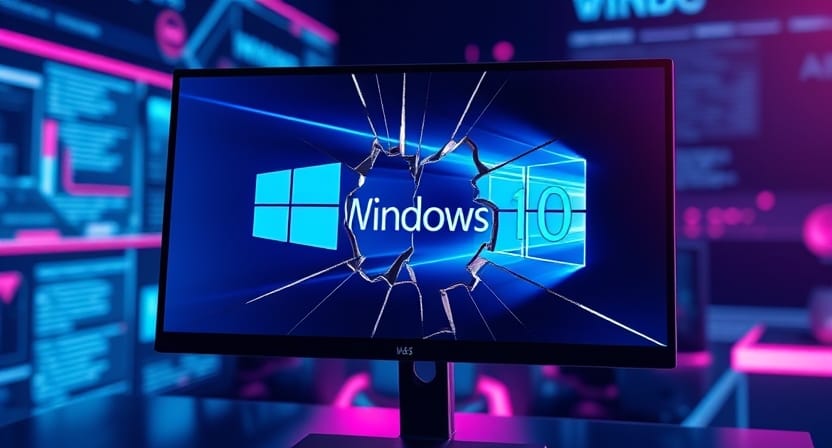Windows 10 Countdown: What’s Next?
4 min read
Introduction
As we approach the Windows 10 countdown to its end of support, users are asking: what’s next? Released in July 2015, Windows 10 revolutionized the PC experience. With regular updates, a refreshed interface, and improved performance, it became the go-to operating system for millions of users. But now, as Microsoft shifts focus to Windows 11, the countdown to Windows 10’s official expiration has begun. So, what can users expect, and how can they prepare for the transition? Read on to find out everything you need to know about what’s coming next.
The Reasons Behind the End of Windows 10
1. The Shift to Windows 11
The primary reason for the Windows 10 countdown is Microsoft’s commitment to Windows 11. Released in October 2021, Windows 11 brings a sleek new design and modern features such as virtual desktops, Snap Layouts, and improved gaming support. With regular updates focused on Windows 11 and the Windows as a Service model, Microsoft is concentrating efforts on its newer operating system. You can read more about the official Windows 11 release on Microsoft’s website.
2. End of Support Lifecycle
Windows 10 will reach the end of its support on October 14, 2025. After this date, Microsoft will no longer provide security patches or technical assistance for Windows 10. This leaves your system vulnerable to potential threats. It’s crucial to transition before this happens, especially if you rely on your PC for personal or professional tasks.
3. Technological Advancements
As the tech world moves forward, so must operating systems. Windows 11 is optimized to leverage newer hardware, such as advanced processors and larger storage. It also boasts better security and performance for modern apps, making it a natural step forward for Windows users. For further details, check out Windows 11’s system requirements.
What’s Different About This Transition?
1. Operating System Lifecycles
Unlike previous versions of Windows, Windows 10 was offered as a “Service,” meaning continuous updates were provided throughout its life. However, Windows 11 will follow a more traditional model with major updates rolled out less frequently. This shift will change how users experience updates, with a focus on long-term stability rather than constant feature additions.
2. User Experience Enhancements
Windows 11 introduces several user experience upgrades that distinguish it from Windows 10, such as enhanced multitasking with Snap Layouts and better integration of Microsoft Teams for collaboration. If you haven’t yet explored Windows 11, it’s worth checking out some of the exciting new features it brings.
3. Software Compatibility
With the growing emphasis on Windows 11, many developers are focusing their efforts on optimizing software for the newer operating system. As a result, Windows 10 users may find some apps and features are not as fully supported or available as Windows 11 moves forward. Consider transitioning to avoid compatibility issues in the future.
Windows 10 Countdown: When Will It End?
1. End of Support Date
As officially stated by Microsoft, October 14, 2025 will mark the official end of support for Windows 10. After this date, there will be no further updates or patches available. Windows 10 users should upgrade to Windows 11 as soon as possible to ensure continued security and stability.
2. Transition Period
Although Windows 10 will remain functional post-2025, the absence of updates makes it an unsafe option for the long term. It’s highly recommended to plan your upgrade ahead of time to avoid dealing with outdated security vulnerabilities.
3. Planning Ahead
For tech-savvy Gen-Z users and professionals alike, planning for the transition is key to a seamless experience. By upgrading before the cutoff, you can avoid the stress of last-minute changes.
Preparing for the Windows 10 Transition
1. Assess Your Hardware
Before making the jump to Windows 11, check if your hardware meets the minimum requirements. Windows 11 requires specific hardware capabilities, including a compatible 64-bit processor, 4GB of RAM, and 64GB of storage. You can use Microsoft’s PC Health Check tool to assess whether your system is ready for the upgrade. For further details on system requirements, visit the Windows 11 specifications page.
2. Backup Your Data
Before upgrading to Windows 11, always ensure your data is safe by creating backups. Utilize services like OneDrive or an external hard drive to store important files. This will help avoid data loss during the upgrade process.
3. Explore Windows 11 Features
Windows 11 introduces a host of new features that can improve your workflow. From virtual desktops to more intuitive window management with Snap Layouts, and built-in Microsoft Teams for seamless communication, take time to familiarize yourself with these enhancements. Check out this guide to Windows 11 features to explore more.
4. Upgrade Process
Upgrading from Windows 10 to Windows 11 is easy through the Windows Update tool. Make sure your current version of Windows 10 is up to date to facilitate a smooth upgrade experience. Microsoft offers detailed upgrade instructions to guide you through the process.
5. Stay Informed
Stay on top of new updates related to both Windows 10 and Windows 11. Microsoft frequently releases patches and security updates that ensure your device remains safe. Regularly check for updates and official announcements to keep your system secure.
Conclusion
As the Windows 10 countdown continues, it’s important for users to prepare for the eventual shift to Windows 11. By checking hardware compatibility, backing up data, and exploring the new features, you can ensure a smooth transition and enhance your computing experience. Don’t wait until the last minute—plan ahead to avoid disruptions and enjoy the benefits of Windows 11’s improved performance and security.
Are you ready for the transition from Windows 10 to Windows 11? Share your thoughts and concerns in the comments below!



